#indian 2 public opinion
Explore tagged Tumblr posts
Text
Indian -2 honest review | பாட்டு மொக்கை; சிரியல் மாதிரி இருக்கு படம் !
ஷங்கர் இயக்கத்தில் கமல்ஹாசன் நடிப்பில் வெளியாகியிருக்கும் இந்தியன் 2 படம் எப்படி இருக்கிறது? கேரள ரசிகர் ஒருவரின் நேர்மையான விமர்சனம்…
#indian#indian 2#indian 2 audio launch#indian 2 fdfs review#indian 2 meme review#indian 2 movie#indian 2 movie review#indian 2 movie songs#indian 2 movie trailer#indian 2 public opinion#indian 2 public reaction#indian 2 public review#indian 2 public talk#indian 2 review#indian 2 review reaction#indian 2 songs#indian 2 tamil movie#indian 2 trailer#indian 2 update#indian 2 usa review#indian2#indian2 review#kamal haasan indian 2
0 notes
Text
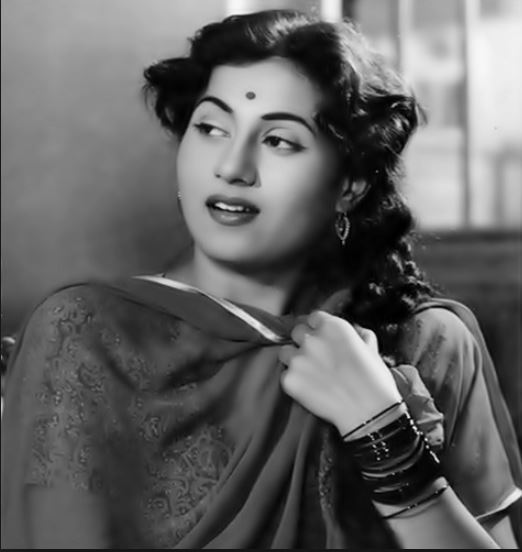
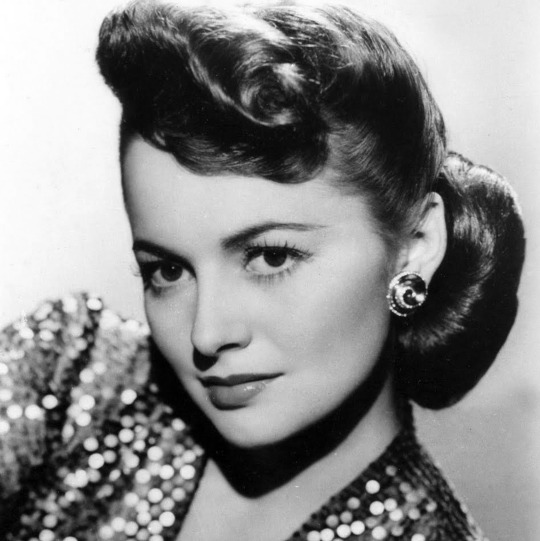
Propaganda
Madhubala (Mughal-e-Azam, Barsaat Ki Raat, Mr. & Mrs. '55)—The Venus of India; heart-throb of all who saw her; responsible for the sexual awakening of every single desi lesbian I know (including me!) And my god, she is breathtakingly beautiful. Look at the subtle grace with which she moves, and that smile - the kind of radiant smile that can make you laugh with sheer delight, or cry because of its hidden pain. Those wild curls! That Cupid's bow! The way she tilts back her head and smiles at you with mischief dancing in her eyes! She has a way of looking at the camera that makes you feel she's sharing a private joke just with you; it's something about that quizzical twist of the lips and eyebrows. As an actress, she is inimitable; she seems to effortlessly inhabit roles ranging from a heart-broken courtesan to a laughter-loving socialite. Fun fact : she's had quite the fan following in Greece! Stelios Kazantidis even wrote a song as a tribute to her.
Olivia de Havilland (Adventures of Robin Hood, Gone With the Wind, The Heiress)— The woman who took on the Studio System at the height of their power and Won! A double Oscar winner! Is magnetic and beautiful in everything she's in and gave us all the juicy scandal with her sibling rivalry with Joan Fontaine! Before the Oscar Slap was the Oscar sister snub! Also everything she wears in Robin Hood she makes beautiful even a purple green and orange monstrosity how does she do it! Anyway this scene is one of my old Hollywood favourites
This is round 3 of the tournament. All other polls in this bracket can be found here. Please reblog with further support of your beloved hot sexy vintage woman.
[additional propaganda submitted under the cut.]
Madhubala:

An icon of Bollywood, who was well known for her beauty and has continued to inspire performances and songs into the 21st century. She was at times described as "the number one beauty of the Indian screen" and "the biggest star in the world".
SHE IS EVERYTHING AHHH. JUST LOOK AT HER SMILE-

She's been nicknamed the Marilyn Monroe of India and was one of the highest paid actresses in the Hindi film industry (the term Bollywood did not exist yet) during the 1950s. Also an extremely talented dancer and singer
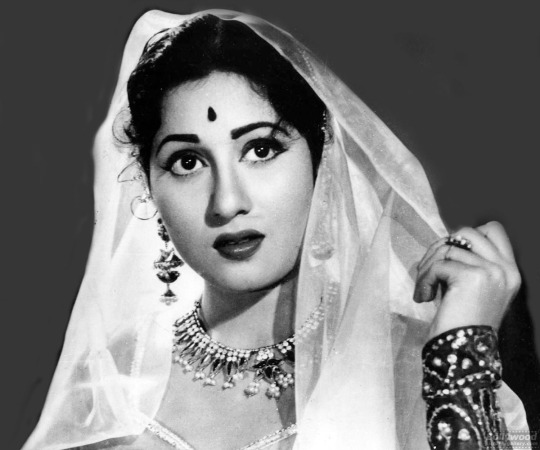
SHE'S JUST SO STUNNING, like seeing her eyes IMMEDIATELY CAPTIVATES YOU, THE DANCING, THE BEAUTY!!!!!!!!! She worked in Bollywood for over 20 years and passed away at a sad early age of 36, BUT THE IMPACT SHE HAD WAS UNMATCHED!!!!!
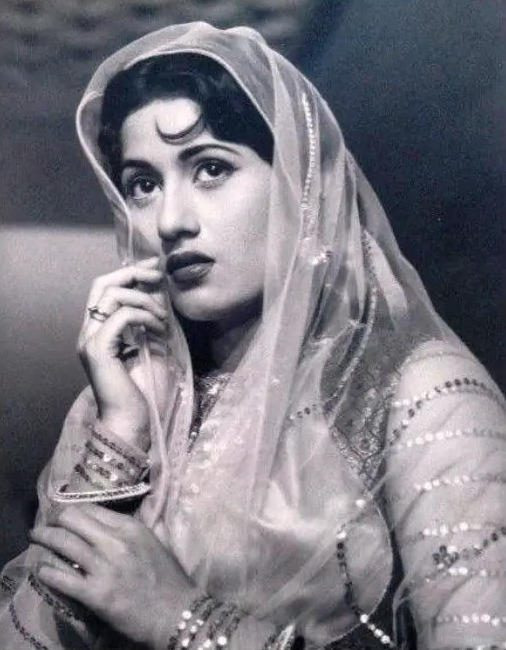
That sassy sideways glance she does always has me WEAK AT THE KNEES. And when she's making silly faces at the camera to mimic someone ahhhh my gay little heart <3

Olivia de Havilland:
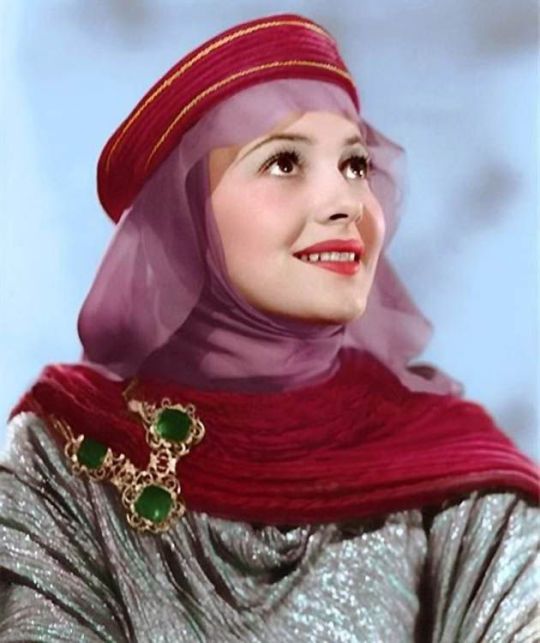
She is just perfection. She has a smile that is looks like it is barely holding back, and yet so reserved as well.
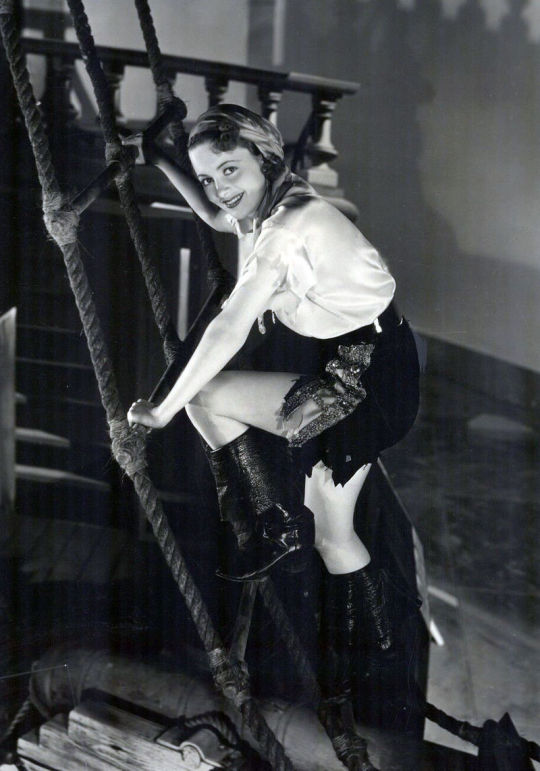
Broke the contract system and won freedoms for actors (the de Havilland Law is still in effect I believe). 2 time Oscar winner. Beautiful and smart
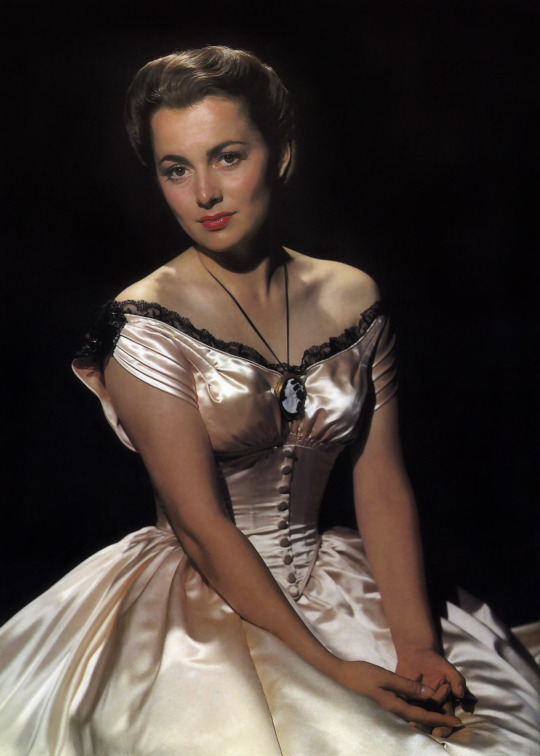
She legally challenged the movie studios' unfair contracts and won, setting a precedent for other actors to be treated more fairly. This was at great cost to her financially and essentially getting her blacklisted for years but the resulting judicial opinion is still known as the De Havilland Law and has won her a great deal of praise and admiration.
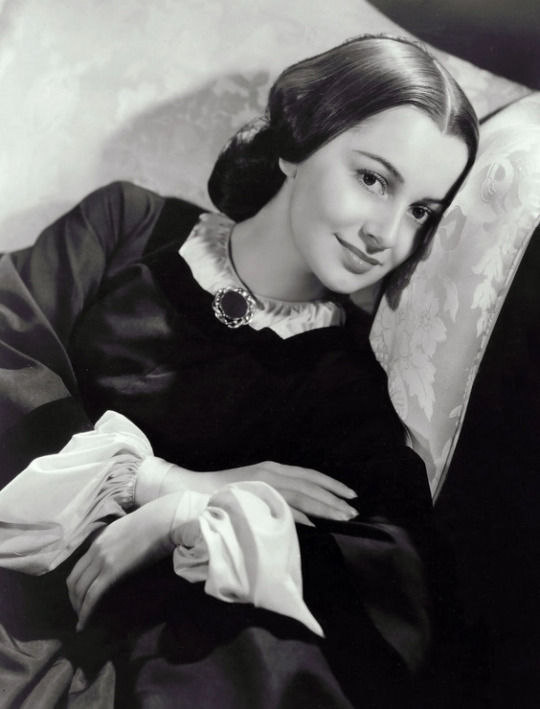
Her performance in The Heiress is one of my all-time favorites, she’s so good at making melodrama feel real and grounded without sacrificing any of the passion/drama.
Serenely beautiful, she struck a balance between crowd-pleasing fluff and prestigious drama. Famously at odds with her equally successful sister Joan Fontaine, she was too much of a lady to ever say anything public. Successfully sued Ryan Murphy for portraying her as a saucy gossip in Feud.
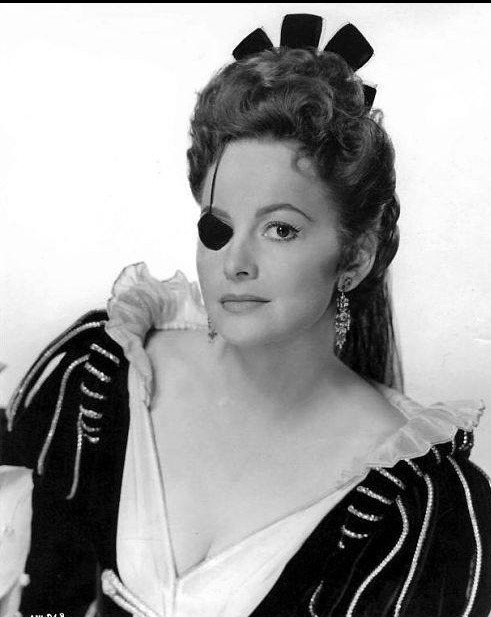

the period costume + eye patch combo in That Lady is just an absolute serve
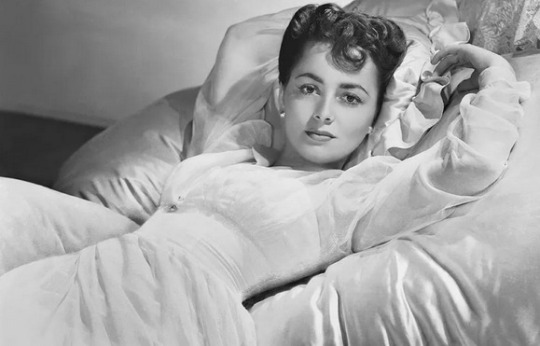
She has the most adorable and cherubic face and voice

224 notes
·
View notes
Note
okay c'mon you can't mention "darth carlitos" in the tags and not tell us more about it
ok i have consulted my collaborator and reconstructed most of this idea. and learned an important lesson about both hubris and note-taking.
so this is part of a broader fic idea known as "into the carlitosverse", where the night after the cincy meltdown, at the peak of sincaraz divorce era™, carlos gets a glimpse of other possible universes where it could, in fact, be worse. these come to him in order of increasing badness, with darth carlitos being the sixth and final vision.
(other universes cut for space reasons but available upon request. i wrote up all THOSE notes just fine, apparently.)
the divergence point is, what if jannik is the one to tell carlos he has. Feelings… and carlos who has internalized from his coach that you don't, you can't, do that on tour shoots him down in cold blood. (juanki premise repurposed wholesale from this fic.) which just like. totally crushes jannik. since getting the nerve to put himself out there was a huge deal that entailed facing up to personal fears about like, vulnerability and and what kind of a life he wanted to live as a tennis player and what he wanted to prioritize in the now vs the future, a very difficult existential struggle he managed to work though because he was so sure carlos would say yes. AND THEN.
(it's kerrigan/lowdermilk's say the word. just realized that.)
jannik then proceeds to completely fall apart from indian wells through wimbledon. gossip thrives on tour and now carlos has a reputation as kind of a dick! like. damn he was really leading sinner on huh. obviously the story grows in the telling lmao but it's undeniable that people like jack draper and the entire italian davis cup team have alcaraz on fucking notice. (ops had a lot of fun taking this to increasingly wild lengths like. darren's super worried about jannik, which trickles back through lleyton hewitt, and now alex de minaur is giving carlos side eye?? and katie backing up jack's story which tbh no one actually believed means the gossip spreads through the brits, too, etc, etc… you can guess where this ended up…)
as a result of jannik's mental collapse carlos' 2024 dominance is even more dominant than it was irl. and the more you win, the more people are going to look for reasons not to like you.
carlos obviously thrives around people! he wants to like them and to be liked by them! so. this sucks. and he kinda knows it's his own fault, but also… is it?? it's not FAIR. so like. fine! if no one likes him any more, fine! he's here to play tennis, not make friends. ← a blatant lie.
wimbledon: jannik goes out r1. carlos is REALLY on the shit list with matteo when they meet in the wimbledon semifinal. it's so bad that after the match matteo doesn't shake carlos' hand and like, holy SHIT. now not just the players' grapevine but also the public rumor mill goes into overdrive. are they beefing because carlos had a couple time violations that weren't called during the match? is it because of the lopsided 6-1, 6-3, 6-2 scoreline? or is it because of the rumor that's been floating around that carlos alcaraz is a player?? DID HE STEAL MATTEO'S GIRLFRIEND OMG
how quickly public opinion can curdle. the crushing guilt + generalized unhappiness + unfairness of it all means that carlitos starts going a little unhinged when things go wrong during matches. as in he starts smashing racquets. with increasing frequency. there's also a lot of yelling at his box. there's juanki looking increasingly more haggard as the season goes on. possibly ferru is called in to help at this point but carlitos doesn't listen to him. team morale is shit at the olympics and davis cup. carlos loses the olympic final to novak and nearly fires juanki (there but for the grace of ferru, etc). then, after jannik heroically pulls himself together and scrapes out like, 3000+ points from just the na/asian hard court swing to make the atp finals and thrashes everyone in his group to make the semifinal - he plays carlos. and then jannik wins that match. carlos feels something almost like relief, almost like desperation. he goes to the net, goes in for a hug... and jannik pulls back and very politely shakes his hand. and carlos does his cool down, media rounds, goes back to the hotel and fires juanki on the spot.
……………………and then he wakes up!
tbh i don't know how an actual fic would end, other than the affirmation that yeah things really COULD be worse… it was originally set after cincy because at the time of this convo that felt like the nadir of divorce era (olympic hangover, court meltdown, wada reveal, etc) but this setting is flexible and can be adjusted to accommodate whichever disappointment is freshest.
WAIT ok. i have it. post-ao qf, rumors are swirling about coach break-up. carlitos is visited by visions of the multiverse. he wakes up with this horrible sinking feeling that this is a sign maybe he DOES have to think about a new coach, bc the most important thing about his relationship with juanki has always been the off-court stuff but what if he ultimately has to choose between his coach and his personal happiness. he reluctantly pulls juanki aside for a talk and is like "so… about… my feelings… about jannik…."
and juanki is like "uGH icb you're making me say this, i don't like it but [grits teeth]. since it's important to you then i. support. you."
and carlos bounds away more convinced than ever that some things are more important than court tactics and probably hits jannik up in dms. the end.
#thanks to my collaborator for their important contributions to this post#aka 30% of the content verbatim#someday they will be able to join us on tumblr :) i believe :)#ficposting#sincaraz
39 notes
·
View notes
Text
introductory excerpts on COINTELPRO
it came to my awareness that some folks don't know what COINTELPRO is still, so imma drop some excerpts from the wikipedia page. ofc there are a billion other resources you can check out, especially firsthand accounts, but this is always a good place to start! link attached below:
[Note that the embedded link above's photo has the following caption: "COINTELPRO memo proposing a plan to expose the pregnancy of actress Jean Seberg, a financial supporter of the Black Panther Party, hoping to "possibly cause her embarrassment or tarnish her image with the general public". Covert campaigns to publicly discredit activists and destroy their interpersonal relationships were a common tactic used by COINTELPRO agents."]
The Introduction:
COINTELPRO (syllabic abbreviation derived from Counter Intelligence Program; 1956–1971) was a series of covert and illegal[1][2] projects actively conducted by the United States Federal Bureau of Investigation (FBI) aimed at surveilling, infiltrating, discrediting, and disrupting domestic American political organizations.[3][4] FBI records show COINTELPRO resources targeted groups and individuals the FBI[5] deemed subversive,[6] including feminist organizations,[7][8] the Communist Party USA,[9] anti–Vietnam War organizers, activists of the civil rights and Black power movements (e.g. Martin Luther King Jr., the Nation of Islam, and the Black Panther Party), environmentalist and animal rights organizations, the American Indian Movement (AIM), Chicano and Mexican-American groups like the Brown Berets and the United Farm Workers, independence movements (including Puerto Rican independence groups such as the Young Lords and the Puerto Rican Socialist Party), a variety of organizations that were part of the broader New Left, and white supremacist groups such as the Ku Klux Klan[10][11] and the far-right group National States' Rights Party.[12]
Methods COINTELPRO Utilized
According to attorney Brian Glick in his book War at Home, the FBI used five main methods during COINTELPRO:
Infiltration: Agents and informers did not merely spy on political activists. Their main purpose was to discredit, disrupt and negatively redirect action. Their very presence served to undermine trust and scare off potential supporters. The FBI and police exploited this fear to smear genuine activists as agents.
Psychological warfare: The FBI and police used a myriad of "dirty tricks" to undermine movements. They planted false media stories and published bogus leaflets and other publications in the name of targeted groups. They forged correspondence, sent anonymous letters, and made anonymous telephone calls. They spread misinformation about meetings and events, set up pseudo movement groups run by government agents, and manipulated or strong-armed parents, employers, landlords, school officials, and others to cause trouble for activists. They used bad-jacketing to create suspicion about targeted activists, sometimes with lethal consequences.[74]
Harassment via the legal system: The FBI and police abused the legal system to harass dissidents and make them appear to be criminals. Officers of the law gave perjured testimony and presented fabricated evidence as a pretext for false arrests and wrongful imprisonment. They discriminatorily enforced tax laws and other government regulations and used conspicuous surveillance, "investigative" interviews, and grand jury subpoenas in an effort to intimidate activists and silence their supporters.[73][75]
Illegal force: The FBI conspired with local police departments to threaten dissidents; to conduct illegal break-ins in order to search dissident homes; and to commit vandalism, assaults, beatings and assassinations.[73] The objective was to frighten or eliminate dissidents and disrupt their movements.
Undermine public opinion: One of the primary ways the FBI targeted organizations was by challenging their reputations in the community and denying them a platform to gain legitimacy. Hoover specifically designed programs to block leaders from "spreading their philosophy publicly or through the communications media". Furthermore, the organization created and controlled negative media meant to undermine black power organizations. For instance, they oversaw the creation of "documentaries" skillfully edited to paint the Black Panther Party as aggressive, and false newspapers that spread misinformation about party members. The ability of the FBI to create distrust within and between revolutionary organizations tainted their public image and weakened chances at unity and public support.[49]
The FBI specifically developed tactics intended to heighten tension and hostility between various factions in the black power movement, for example between the Black Panthers and the US Organization. For instance, the FBI sent a fake letter to the US Organization exposing a supposed Black Panther plot to murder the head of the US Organization, Ron Karenga. They then intensified this by spreading falsely attributed cartoons in the black communities pitting the Black Panther Party against the US Organization.[49] This resulted in numerous deaths, among which were San Diego Black Panther Party members John Huggins, Bunchy Carter and Sylvester Bell.[73] Another example of the FBI's anonymous letter writing campaign is how they turned the Blackstone Rangers head, Jeff Fort, against former ally Fred Hampton, by stating that Hampton had a hit on Fort.[49] They also were instrumental in developing the rift between Black Panther Party leaders Eldridge Cleaver and Huey Newton, as executed through false letters inciting the two leaders of the Black Panther Party.[49]
...
In order to eliminate black militant leaders whom they considered dangerous, the FBI is believed to have worked with local police departments to target specific individuals,[78] accuse them of crimes they did not commit, suppress exculpatory evidence and falsely incarcerate them. Elmer "Geronimo" Pratt, a Black Panther Party leader, was incarcerated for 27 years before a California Superior Court vacated his murder conviction, ultimately freeing him. Appearing before the court, an FBI agent testified that he believed Pratt had been framed, because both the FBI and the Los Angeles Police Department knew he had not been in the area at the time the murder occurred.[79][80]
...
In 1969 the FBI special agent in San Francisco wrote Hoover that his investigation of the Black Panther Party had concluded that in his city, at least, the Panthers were primarily engaged in feeding breakfast to children. Hoover fired back a memo implying the agent's career goals would be directly affected by his supplying evidence to support Hoover's view that the Black Panther Party was "a violence-prone organization seeking to overthrow the Government by revolutionary means".[84]
Hoover supported using false claims to attack his political enemies. In one memo he wrote: "Purpose of counterintelligence action is to disrupt the Black Panther Party and it is immaterial whether facts exist to substantiate the charge."[85]
Intended Effects of COINTELPRO
The intended effect of the FBI's COINTELPRO was to "expose, disrupt, misdirect, or otherwise neutralize" groups that the FBI officials believed were "subversive"[58] by instructing FBI field operatives to:[59] 1. Create a negative public image for target groups (for example through surveilling activists and then releasing negative personal information to the public) 2. Break down internal organization by creating conflicts (for example, by having agents exacerbate racial tensions, or send anonymous letters to try to create conflicts) 3. Create dissension between groups (for example, by spreading rumors that other groups were stealing money) 4. Restrict access to public resources (for example, by pressuring non-profit organizations to cut off funding or material support) 5. Restrict the ability to organize protest (for example, through agents promoting violence against police during planning and at protests) 6. Restrict the ability of individuals to participate in group activities (for example, by character assassinations, false arrests, surveillance)
When did they start?
Centralized operations under COINTELPRO officially began in August 1956 with a program designed to "increase factionalism, cause disruption and win defections" inside the Communist Party USA (CPUSA). Tactics included anonymous phone calls, Internal Revenue Service (IRS) audits, and the creation of documents that would divide the American communist organization internally.[9] An October 1956 memo from Hoover reclassified the FBI's ongoing surveillance of black leaders, including it within COINTELPRO, with the justification that the movement was infiltrated by communists.[31] In 1956, Hoover sent an open letter denouncing Dr. T. R. M. Howard, a civil rights leader, surgeon, and wealthy entrepreneur in Mississippi who had criticized FBI inaction in solving recent murders of George W. Lee, Emmett Till, and other African Americans in the South.[32] When the Southern Christian Leadership Conference (SCLC), an African-American civil rights organization, was founded in 1957, the FBI began to monitor and target the group almost immediately, focusing particularly on Bayard Rustin, Stanley Levison, and eventually Martin Luther King Jr.[33]
How did the news get out about COINTELPRO?
The program was secret until March 8, 1971, when the Citizens' Commission to Investigate the FBI burgled an FBI field office in Media, Pennsylvania, took several dossiers, and exposed the program by passing this material to news agencies.[1][54] The boxing match known as the Fight of the Century between Muhammad Ali and Joe Frazier in March 1971 provided cover for the activist group to successfully pull off the burglary. Muhammad Ali was a COINTELPRO target because he had joined the Nation of Islam and the anti-war movement.[55] Many news organizations initially refused to immediately publish the information, with the notable exception of The Washington Post. After affirming the reliability of the documents, it published them on the front page (in defiance of the Attorney General's request), prompting other organizations to follow suit. Within the year, Director J. Edgar Hoover declared that the centralized COINTELPRO was over, and that all future counterintelligence operations would be handled case by case.[56][57]
#reaux speaks#black panther party#fbi corruption#cointelpro#counterinsurgency#revolution#martin luther king jr#black power#intersectional feminism#indigenous#young lords#history#wikipedia#communism#socialism#j edgar hoover#mccarthyism
379 notes
·
View notes
Note
Hello! Is this where we can ask random questions about Sbcl? I've seen your posts answering asks and I want to join in!
1. Who do you think will confess first? How? And how would the other react?
2. How would their dynamic change after they got together?
3. How would the rest of the servants react when they find out?
Thank you! 😁😊
ahhh moot, im so flattered you sent me an ask 🥹
and yes!!! any question about sbcl i will answer <3
1. unpopular opinion but sebs "fell" first ciel "fell" harder (but falling is a strong word). i don't think either of them would confess directly BUT sebastian is always doing things for ciel that he isn't obligated to do as a butler/contracted demon, especially comforting him/showing he believes in him (both in public school arc and recently in chapter 211). ciel initially wanted sebastian to lose (first chapter and even in the indian butler arc) but now he's a lot more supportive and even does unnecessary things like giving him a day of rest and bringing him food (special chapter 131.5) and in recent chapters (212) he ordered him tea while they were on the way to brighton. i think rather than confessing, they'd just slowly develop romantically. they're both confused by the tenderness they show one another so i would imagine if either of them let their affections spill out verbally, the other would be shocked.
2. it's plausible that it wouldn't change much in the eyes of the reader. to put it simply: for sebaciel, comparing the chapter 1 dynamic to chapter 212 dynamic would be like comparing apples to oranges. but when we read the manga, their relationship progression is very slow and has many push-n-pulls so maybe we wouldn't think it changed much? i mean people have pointed out how closer they've become, eg how sebs holds ciel's hands more when helping him off the carriage. it's the little things when it comes to this relationship. i think their dynamic would just become softer and softer as it has following the rhythm of the manga.
3. bard would probably be the most perceptive, i think he would be able to tell if things took a more romantic/sexual turn. snake (i know he's dead but 🥲) would hear from his snakes that sometimes the master and the butler shared the same bed (how scandalous!!) and meyrin already saw ciel as her rival in the anime but i think canon manga meyrin wouldn't really pick up on their relationship as easily (she'd def be nosey tho) BUT the most oblivious would be finny like i don't even think he'd realise they're romantically involved if they french kissed in front of him. oh and tanaka probably knows sebs isn't human so i wouldn't be surprised if he could see through them as a couple even before they're "official".
17 notes
·
View notes
Text
Indian Elections (Part 2)
Part 2 of the result and campaign opinions is here!
I know I said that Rajasthan was Congress's biggest comeback, well I take it back because INDIA alliance won in Maharashtra with Congress getting 13 seats, Shiv Sena (og one) with 9 and NCP (again, og one) with 8. With BJP getting 9 seats, Shiv Sena (Eknath Shinde one) and NCP (new one) getting 7 and 1 seats respectively, NDA lost 28 of its seats. And honestly, what a banger. Sharad Pawar probably deserves credit for this, that man is a shrewd politician. Also, the Congressi responsible for campaigning in Maharashtra also deserves credit, because Congress performed well and beyond the expectations here.
Tamil Nadu my beloved. Major INDIA sweep! DMK (22) and Congress (9) while BJP remained on the zero mark. As expected of the Tamil public. Everyone say thank you to DMK's campaign and BJP's incompetency to get the Tamilians on their side.
Chhattisgarh is an almost BJP sweep, with BJP getting 10 and Congress getting 1. Expected for Congress, given the Vidhaan Sabha results last year.
Another almost BJP (25) sweep is Gujarat, again, as expected. It is, after all BJP's garh, as my mother calls it. Very heavy campaign that paid off for BJP. Hats off to the Congressi who won 1 seat, probably worked very hard on his own.
Things get tricky in Karnataka, where BJP won with 17 seats and Congress got 9. Again, not much familiar with Karnataka politics, but BJP did lose 8 of its seats, so I guess a part of the public is losing trust in the government but it's not a majority yet. A Rajasthan like situation.
TDP shines in Andhra Pradesh with 16 seats, BJP with 4. Congress remained on its zero mark. Chandrababu Naidu come to the INDIA bloc you can be deputy PM
Congress (14), Muslim League (2) and CPIM (1) lead INDIA alliance to an almost sweep in Kerala, BJP getting 1 seat. I'm so glad that Shashi Tharoor won from Thiruvananthapuram, he is a delight to watch.
Things are perfectly balanced as all things should be in Telangana, with both Congress and BJP winning 8 seats each. I guess the public has major divide on issues and opinions.
That's it for this part, I thought this will be done in 2 parts, but guess not.
10 notes
·
View notes
Text
Famous Inventor’s Icks.
Henry Ford
Apparently, he hated Jews. He even made an entire newspaper section dedicated to telling the public just how much they're trying to achieve world domination continuously for a good number of years, on the front page, called “The International Jew: The World's Problem,” even Hitler was hyper aware of his works and praised them, soon even awarding Ford the Grand Cross of the German Eagle on his 75th birthday, 30 July 1938. Which he accepted since you know, they were far away buddies.
Thomas Edison
He hated tons like an elephant weight number of tons. 1 – Any form of criticism, got extremely annoyed when Henry Morton, the President of the Stevens Institute of Technology, called his light bulb a "conspicuous failure" in a public letter. 2 – Most (if not all) black inventors getting any kind of credit for things he majored in like, Edison sued Granville T. Woods, a prolific Black inventor, twice in the 1880s, claiming that he invented the telegraph for trains first. 3 – Tesla. Tesla eventually resigned from Edison's company after becoming convinced that Edison hadn't lived up to a promise of bonuses.
Madame Curie
Xenophobia, Curie faced xenophobia as part of the right-wing press campaign against her. Sexism was also an obvious and huge problem for her as well, some of her coworkers didn’t enjoy her much because they felt she was spending too much time in the lab rather than with her own children. In 1911, Curie was denied a seat in the French Academy of Sciences, likely due to sexism and religion. The right-wing press spread false rumors about her, including that she was Jewish and not truly French.
Nikola Tesla
He absolutely despised germs, this man was the definition of a germaphobe to the point where he declined to shake hands, even wore gloves to avoid germs and hair, just simply hated the feeling of touching hair, some speculate that his hate of feeling hair is stemming from a childhood illness, made him particularly sensitive to the idea of hair carrying bacteria.
Benjamin Franklin
Hated Germans, even saying that they weren’t “as smart as the people already living in the colonies.” As of 1750s, disparaging "low women," Catholics, and Jews; decrying "alien" German immigrants who would "swarm into our settlements;" and labeling Native Americans as "drunken "savages who delight in war. take pride in murder," and should be pursued with "large, strong, and fierce dogs." Yet, in the 1760s, when white Americans attacked an Indian settlement, he labeled the attack "white savagery." African Americans, he described as "sullen, malicious, revengeful" and "by nature [thieves.]" Yet, ever the inquiring scientist, he visited a school for black children, emerging from the visit with a "higher opinion of the black race than I had ever before entertained."
Hedy Lamarr
Lamarr was not a supporter of her husband's political views and hated fascism. She was concerned about the war and didn't feel comfortable making money in Hollywood while the world was in such a state, Lamarr was unhappy in her marriage to Mandl, a wealthy armaments producer for the Nazis. She described him as controlling and said he prevented her from pursuing her acting career. Lamarr escaped to Paris in 1937 and divorced Mandl.
Steve Jobs
Jobs famously disliked styluses, saying, "You have to get 'em, put 'em away, you lose 'em. Yuck! Nobody wants a stylus. So, let's not use a stylus". He also killed the Newton, a tablet-like device that used a stylus, also didn’t like Bill Gates very much, Jobs called Gates "unimaginative" and said that Gates was more comfortable in philanthropy than technology.
All information from google, I tried not to use Wikis, but if it’s incorrect then blame the internet, not me.
#steve jobs#inventory#hedy lamarr#benjamin franklin#nikola tesla#madame curie#thomas edison#henry ford#icks
5 notes
·
View notes
Text
“India has one of the highest rates of honor killing and dowry deaths, where newlywed brides are tortured, burnt, sometimes even murdered on the basis of sex. For a man with caste and class privilege living so far removed from the everyday realities of Indian women, Alok Vaid-Menon sure has audacity to call himself a ‘bride,'” she (Vaishnavi Sundar) said.
An American trans activist who identifies as ‘transfeminine’ was recently featured by the Indian publication Brides Today on their digital cover, prompting criticism on social media. Alok Vaid-Menon, 31, who uses “they/them” pronouns, was interviewed and photographed for the magazine wearing clothing resembling traditional attire for women.

Vaid-Menon’s April 19 appearance in the magazine was presented as a commentary on same-sex marriage, which is currently being debated at India’s highest court.
During the full interview, Vaid-Menon was asked his thoughts on topics such as marriage and love, stating “love is about expansion, not constriction. Permission, not prohibition… I want to be a living love poem. Every day I ask myself, ‘How can I love harder?’ Love breaks through binaries—man and woman, us and them, you and me… Love doesn’t live in should, it lives in what is.”
Yet despite the platitudes, Vaid-Menon has caused concern for a past statement in which he referred to “little girls” as being “kinky” and claimed to have himself once been “a cute little girl.”
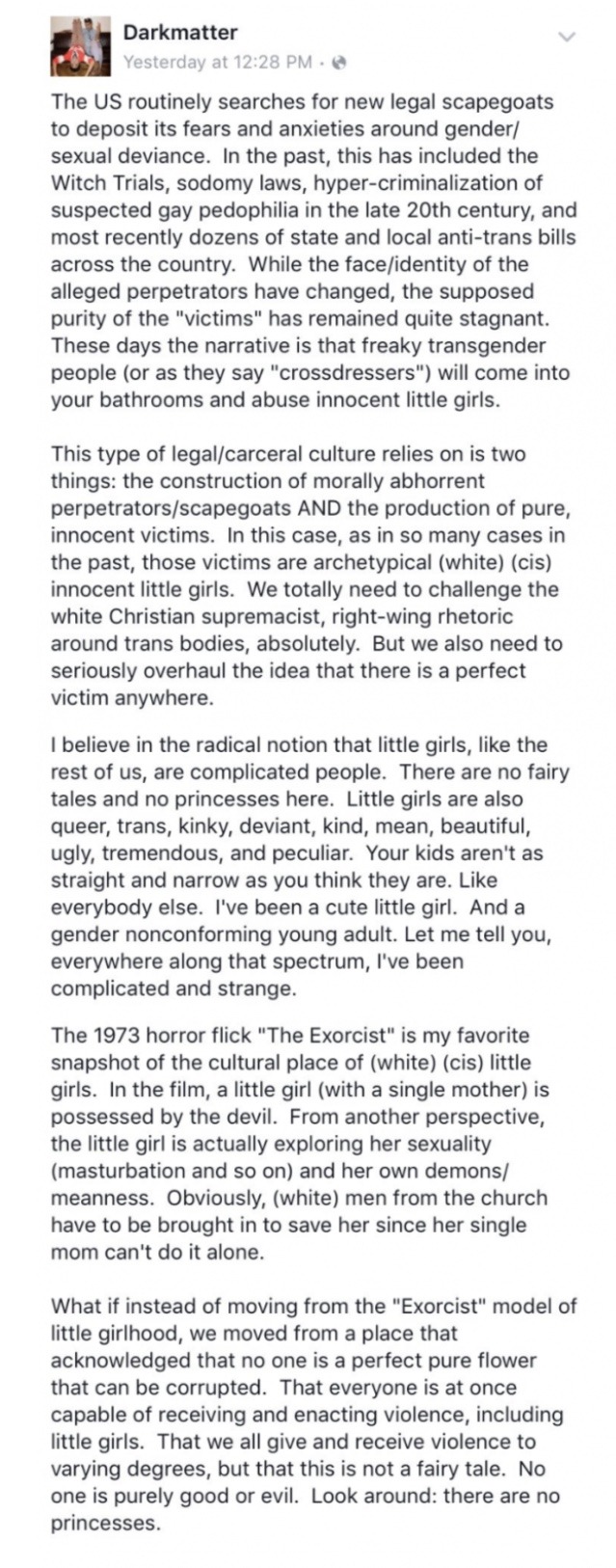
In approximately 2016, when Vaid-Menon was using the moniker Dark Matter to promote himself as a performance artist and poet, he published a disturbing statement on his views of young girls’ presumed sexuality.
In the statement, Vaid-Menon rejects the notion that little girls need to be protected from “gender/sexual deviance,” and instead claims that “little girls, like the rest of us, are complicated people.”
Vaid-Menon was writing about legislation that had been introduced in the state of North Carolina that year establishing that public restrooms remain single-sex accommodations. House Bill 2, the Public Facilities Privacy & Security Act, was intended to protect women and children from being exposed to men while in a state of undress.
Vaid-Menon responded to the bill being signed into law by claiming that single-sex spaces were being upheld under a false narrative of protecting “innocent little girls” from “freaky” transgender people.
“There are no fairy tales and princesses here. Little girls are also queer, trans, kinky, deviant, kind, mean, beautiful, ugly, tremendous, and peculiar. Your kids aren’t as straight and narrow as you think they are,” Vaid-Menon wrote.
He went on to claim that he viewed the 1973 horror classic The Exorcist as being about “a little girl … exploring her sexuality (masturbation and so on) and her own demons/meanness.”
In 2021, quotes from the post began circulating on Twitter and prompting outrage, but users found themselves getting suspended for referencing or reacting to the text.
Conservative political pundit Lauren Witzke was suspended from Twitter for hate speech after retweeting a graphic showing Vaid-Menon’s quote, to which she commented that the views he expressed were “demonic.” Witzke was reinstated on the platform almost two years later, after Tesla CEO Elon Musk bought Twitter and offered “amnesty” on many previous suspensions.
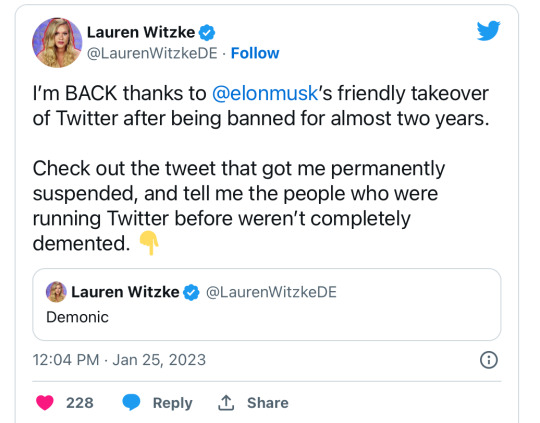
The views expressed in Vaid-Menon’s Facebook post were criticized by the now-deceased lesbian activist YouTuber Magdalen Berns in a video she titled “Non-Binary Bullsh*t.” Berns concluded that in her opinion, his comments on girlhood made him “sound a bit like a pedo,” and remarked that “even his fans” disapproved, causing him to eventually delete the post.
The following year, in 2017, Vaid-Menon and fellow non-binary activist Jacob Tobia were profiled by Vice in an article titled “Why Can’t My Famous Gender Nonconforming Friends Get Laid.” The article was subject to widespread mockery for highlighting Vaid-Menon’s lack of success in dating, and included comments indicating that Vaid-Menon and Tobia had considered taking female hormones in order to date heterosexual men in an attempt to expand their dating pool.
Vaid-Menon has been a strong proponent for “neutralizing” women’s issues in order to make them “gender inclusive.” He has previously written about the importance of using gender neutral language when discussing abortion, pregnancy, or sex-based violence, also denouncing the term “women’s rights” as not being sufficiently welcoming to gender non-conforming people.
In 2020, Vaid-Menon was featured by menstrual hygiene company This is L and the Phluid Project – a “gender free” clothing and lifestyle brand based in New York – in a promotional video featuring individuals of varying “gender identities” to spread the message that periods are not specific to females. Vaid-Menon had endorsed this belief previously when, in 2019, he shared an articlefrom Seventeen magazine, a publication aimed at girls and young women, titled “What Trans & Non-Binary Menstruators Should Know About Periods.”
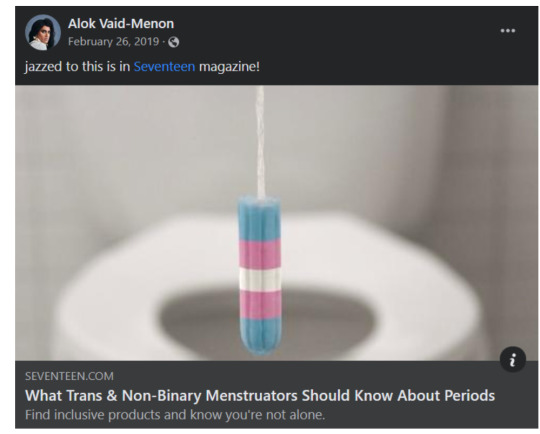
Women’s rights campaigner and filmmaker Vaishnavi Sundar blasted Vaid-Menon’s activism as “dangerous” while calling attention to the plight of women and girls in India.
In 2020, screenings of a documentary Sundar had produced titled “But What Was She Wearing?” were cancelled in response to previous tweets she had made opposing men in women’s spaces. Her film sought to address the sexual harassment and sexual violence that women in the nation experience, juxtaposing the contrast between what laws on paper purport and the on-the-ground reality.
“India is an extremely caste-riddled society. Indian women across all castes experience profound violence at the hands of men. A large majority still live under acute poverty, devoid of basic sanitation, education, safety, or legal recourse,” Sundar told Reduxx.
“India has one of the highest rates of honor killing and dowry deaths, where newlywed brides are tortured, burnt, sometimes even murdered on the basis of sex. For a man with caste and class privilege living so far removed from the everyday realities of Indian women, Alok Vaid-Menon sure has audacity to call himself a ‘bride,'” she said.
“To import gender identity ideology as some form of progressive ticket to freedom is not just obscene, it is dangerous. In a country that still kills the female newborns and blames young girls for being raped, gender identity is the last thing we want shoved down on us while we haven’t even saved ourselves from the existing misogyny,” Sundar added.
“The only group of people profiting from this ideology are the corporations, medical and pharmaceutical industries. Men like Alok Vaid-Menon are promoters of said industries under the veneer of being progressive and inclusive.”
#India#Brides Today#Alok Vaid-Menon#Trans identified males sexualizing girls and girlhood#Womb envy#Vaishnavi Sundar Spoke the truth
30 notes
·
View notes
Note
Kya hamare desh mein freedom of speech jesa abb kuch baki hai? Kyuki aajkal ladakh , manipur jese incidents dekh k toh nhi lagta..
Yes freedom of speech exists in India but it's facing challenges the indian constitution's article 19 guarantees freedom of speech and expression this means you can freely express your opinions and beliefs even if they're unpopular
But there are some limits for example you can't promote violence or hate speech the government can also restrict speech if it threatens national security or public order
Recent events in Ladakh and Manipur involved the government shutting down the internet restricting speech the government argues these shutdowns are necessary to prevent violence and instability critics argue they're unnecessary and violate citizens' rights so the future of free speech in India is uncertain ..the government and citizens need to work together to protect it and prevent misuse
So here are what you can do to protect free speech -
1. Use internet : Spread awareness and educate people create community by creating blogs and making video and by creating social media pages
2.Educate yourself on the importance of free speech
3.Contact your elected officials and urge them to protect it
4.Support organizations working to defend free speech
5. Speak up when you see free speech being violated ....Free speech is a valuable right that needs protection by working together we can all do our part
4 notes
·
View notes
Note
Hi! I wanted to ask your opinion as someone who used to live in New Jersey. I'm thinking of moving my family there. We want to get away because we currently live in a red state with horrific anti-LGBT laws, anti-abortion laws, and shamefully loose gun laws. One of the reasons New Jersey caught my eye as a possibility is that I've heard it has some of the strictest gun laws in the US (which is not saying much, but I'll take what I can get), which sounded very appealing to me. What's your opinion on the state? Is it a good place to raise children? Thank you for any advice or insight you can offer.
I lived in NJ the first twenty-three (ish, with college) years of my life, and have been gone long enough to feel comfortable to say that I lived in Middlesex County in Edison, Woodbridge, and Metuchen.
It's a good place to raise children, if you have money. Having now lived in both the north and the south for substantial amounts of time, I think it's hard for people not from the northeast to conceptualize how fucking expensive it is to live there. There's a reason that every other person you talk to in SC or FL are from NY or NJ -- people can't afford the goddamn property taxes. My wife who is from WV was astonished at how much houses cost, even before factoring in everything else. Seeing a 2-2 go for $500k in my hometown made her want to vomit.
But the money does fund the best public education system in the country. (Cue the joke about NJ's biggest export being college students.) When I graduated high school in 2011, I did so with 33 college credits. I had a genuinely good public school education, especially when compared to what I hear from friends and loved ones who weren't incubated in an ugly McMansion off the Jersey Turnpike.
NJ is also a cultural melting pot. Within 90 minutes of entering the state my body obligates me to order Indian food. Your neighbors are from all different countries and regions of the world. You will hear more languages than you knew existed.
As a child in NJ, I never saw, handled, or shot a gun. There's very little gun culture outside of people who go hunting. That's not to say there's not gun violence -- I was in Menlo Park Mall when this murder-suicide occurred in 2007, ten minutes from my house.
There's also still white supremacy. The Klan actively recruits in areas of South Jersey, was openly recruiting when I was in high school. NJ still has active sundown towns. I'd recommend staying closer to Philly or NYC, if the reason you're moving is to flee a red state with restrictive LGBTQIA and abortion laws. The western part of the state is a lot of rural communities and a lot of farm land and a lot of Trump country.
As with moving anywhere, I'd recommend researching where you're moving to very thoroughly.
It's going to be a big culture shock, especially if you're moving from a state that sees small talk as a requisite for politeness. The traffic will be terrible. All the roads have tolls, you have to buy an EZ Pass. Practice your bagel order before you get to the counter. The biggest sin is wasting someone's time.
I love SC, and want to stay and fight for the town where we currently live, which is about to host it's third annual Pride festival. The schools suck, but my wife and I are never going to agree on a working definition of a "good" school because our experiences with public education are wildly disparate. But I can sympathize with you deeply -- I have a trans son, and every time we reach a new election cycle I wince and wonder if my marriage will be undone for political scorekeeping. I don't understand the love affair with guns. I doubt I ever will. But it's worth fighting for, and right now the cost of staying in the fight isn't too high -- there are people we love in SC who are also staying to roll up their sleeves and refusing to budge.
For now.
But NJ is my home. If I could afford to live there, I would move back in a heartbeat.
10 notes
·
View notes
Text
17: Alanis Obomsawin // Bush Lady

Bush Lady Alanis Obomsawin 1985, Radio Canada (Bandcamp)
youtube
A review of the well-meaning things I meant to say about Alanis Obomsawin’s Bush Lady
“No matter how accomplished Obomsawin’s sole LP, 1988’s cult classic Bush Lady may be, it’s naturally overshadowed by her extensive work as a documentary filmmaker. Her searing Kanehsatake: 270 Years of Resistance (available to stream for free from the National Film Board), covering the 1990 Oka standoff between local Indigenous land defenders, Quebec police, and the Canadian military, is a landmark. Her films are celebrated, broadcast on public television, and taught in schools.”
1.5/5—Book report quality. This is a not-very-slick way of admitting the only one of her movies I’ve seen in her most famous one. Also saying a director’s films are “celebrated, broadcast on public television, and taught in schools” in Canada sounds a lot like saying not many people have actually seen them.
“Her roots as a singer-songwriter predate her filmmaking, however. By the late 1950s, when she was in her twenties, she was performing and writing original songs in the Waban-Aki/Abenaki language, English, and French, but her recordings are sporadic prior to cutting this set at the CBC in the mid-1980s. The material was scantly issued at the time, and it probably found its widest listenership after a 2018 reissue by Constellation Records.”
2/5—Solid enough exposition, though it does beg the question why I didn’t just paste in the press release from the label.
“Bush Lady finds her singing and playing a handheld frame drum alongside a Quebecois chamber quartet. I was drawn to the record by ‘Odana,’ a melancholy fable about resisting colonial land grabs written in Abenaki by a tribal elder in the 1800s, which Obomsawin has presumably set to music of her own devising. Arranger Jean Vanasse and the quartet, likely trying to equate the song to a mode they were more familiar with, approach it like Nelson Riddle on Sinatra’s Only the Lonely. Nocturnal strings and woodwinds ripple around Obomsawin’s satiny vocal, lending the tragic folk tale the style of a blue ballad in an urban theatre.”
2.5/5—It took a while, but finally something about the music, an opinion even!
“There may be a bit of a feint in opening an album called Bush Lady with such a high-thread-count piece. ‘Odana’ lulls the non-Abenaki-speaking listener in with its soothingly westernized take on ‘Indian music,’ the lyrics’ message about stolen land masked by the unfamiliar tongue.”
2/5—Translation: “I am sort of embarrassed that the song I like best on this protest album is the one that sounds kind of like Nat King Cole, so I’ll change the subject to rhetoric.”
“But as the music segues into the theatrical 13-minute title track, its politics become explicit even to an English speaker. Obomsawin chants ritualistically over the insistent thump of her frame drum, interspersed with semi-spoken dialogue. She acts out characters: leering white men who harass and prey upon young Native girls; scornful, gossiping housewives; and finally the ‘Bush Lady’ herself, asking a white woman to care for her blonde mixed race child for fear it will be rejected by her own people. The recurring chant serves as a Greek chorus, a mournful counterpoint to the acrid sarcasm of the dialogue. The song undergoes a dramatic shift at the end when the fallen woman is visited by the spirit by her kokum (grandmother), who ushers her into paradise, accompanied by fluttering strings.”
3/5—Decent exegesis. But, dammit man, do you enjoy it or don't you?
“The track is a surprisingly good fit with reissuing label Constellation’s own catalogue. Like their cohort of Godspeed You! Black Emperor-adjacent projects, ‘Bush Lady’ is expansive and confrontational, fusing funereal cello and violin with blunt agitprop. When it works, it has a palpable force. Like agitprop though, the song isn’t subtle fare, and I have to admit the melodramatic conclusion (which is a harp or two away from a caricature of Christian heaven) feels a bit Wizard of Oz to me. I also don’t have a lot to say about the nearly side-length ‘Théo,’ a second drum-driven story song, this one sung in French. It is even more in a spoken word style than ‘Bush Lady,’ and as an Anglophone I can’t glean much despite another magnetic Obomsawin vocal.”
2.5/5—Reader, that must be one comfortable fence.
“I’m glad to have this reissue of Bush Lady in my collection for its transfixing A-side, and its significant overall historical interest. It’s well worth a listen for the curious.”
Overall review rating: 2.2142857142857142857142857142857/5, or 5 CLICK THE LINK TO WATCH HER FILMS FOR FREEs out of 5.
youtube
4 notes
·
View notes
Text
Indian 2 - Disappointing | ஷங்கரின் விதவிதமாகக் கொல்லும் obsession!
ஷங்கர் இயக்கத்தில் கமல்ஹாசன் நடிப்பில் வெளியாகியிருக்கும் இந்தியன் ௨ படம் எப்படி இருக்கிறது. சமூக ஊடக கருத்துக்கள் … Saravanakarthikeyan Chinnadurai இந்தியன்-II – @ interval – வர்மக் கர்மங்கள் தவிர மற்றவை நன்று. விதவிதமாகக் கொல்லும் obsession-லிருந்து ஷங்கர் வெளிவரச் சிரமப்படுகிறார். #Indian2 #KamalHassan #Siddharth 1st half-sidharth portion was good-Killings was cringe xD– unwanted set…
#indian#indian 2#indian 2 audio launch#indian 2 fdfs review#indian 2 kamal haasan#indian 2 meme review#indian 2 movie#indian 2 movie audio launch#indian 2 movie audio launch event#indian 2 movie review#indian 2 movie songs#indian 2 public opinion#indian 2 public reaction#indian 2 public review#indian 2 public talk#indian 2 review#indian 2 review telugu#indian 2 songs#indian 2 trailer#indian 2 update#indian 2 usa review#kamal haasan indian 2
0 notes
Text
Can Non-Resident Indians (NRIs) Legally Purchase Agricultural Land in India?
Navigating the complexities of property acquisition in India requires a thorough understanding of the legal framework, especially for Non-Resident Indians (NRIs) interested in agricultural land. The primary legislation governing such transactions is the Foreign Exchange Management Act (FEMA), 1999. Under FEMA, NRIs and Overseas Citizens of India (OCIs) are explicitly prohibited from purchasing agricultural land, plantation properties, or farmhouses in India. This restriction aims to safeguard the nation's agricultural resources and prevent speculative transactions that could disrupt the agrarian economy.

Legal Provisions Governing NRI Agricultural Land Law
The Reserve Bank of India (RBI) and the FEMA, 1999 strictly regulate the acquisition of immovable property by NRIs. As per Section 2(v) of FEMA, agricultural land, plantation property, and farmhouses are categorized as "restricted assets" for NRIs. RBI Master Directions on Acquisition and Transfer of Immovable Property in India (Updated 2023) reaffirm that NRIs are not permitted to purchase agricultural land in India without specific permission from the RBI.
However, inheritance and gifting are notable exceptions under the NRI agricultural land law. An NRI may acquire agricultural land:
By Inheritance – If an NRI inherits agricultural land from a resident Indian, it is legally permissible under FEMA and the Income Tax Act.
By Gift – A resident Indian who owns agricultural land can gift it to an NRI provided the donor is a relative as defined under the Companies Act, 2013.
These exceptions indicate that while direct purchase remains legally impermissible, NRIs can still own such land through inheritance or gifting mechanisms.
Government Permissions and RBI Approval under NRI Agricultural Land Law
Despite the outright prohibition under FEMA, an NRI can apply for special permission from the Reserve Bank of India (RBI) to acquire agricultural land in exceptional cases. However, such approvals are rare and granted only when the acquisition aligns with public interest or government policies.
Process for Seeking RBI Approval:
Application to RBI – The NRI must submit a formal request under Section 6(3) of FEMA, detailing the purpose of acquisition and its intended use.
State Government Consultation – Since land is a state subject, RBI may seek the state government’s opinion on whether the acquisition should be permitted.
Evaluation of Public Interest – If the purchase is linked to agricultural development, research, or any initiative benefiting farmers, the RBI may consider granting approval.
Final Decision by RBI – If approved, the transaction must be reported under FEMA compliance norms, ensuring it does not violate foreign exchange regulations.
It is crucial to note that such approvals are discretionary and not a legal right. In practice, the RBI has rarely permitted NRIs to purchase agricultural land unless the request is backed by substantial agricultural or public welfare objectives.
Legal Consequences of Violating NRI Agricultural Land Law
Any unauthorized purchase of agricultural land by an NRI is a violation of FEMA, 1999 and can attract serious legal consequences. The Enforcement Directorate (ED) and RBI actively monitor transactions to ensure compliance with foreign exchange regulations.
Penalties and Legal Repercussions:
Void Transaction – If an NRI purchases agricultural land without approval, the transaction is considered null and void, meaning no legal rights over the land are conferred.
Monetary Penalties – Under Section 13 of FEMA, an NRI can face penalties amounting to three times the transaction value or ₹2 lakh, whichever is higher.
Confiscation of Property – Authorities have the power to seize the land under the FEMA (Adjudication Proceedings and Appeal) Rules, 2000.
Criminal Prosecution – If fraudulent methods, such as benami transactions, are used, the NRI may face additional charges under the Benami Transactions (Prohibition) Act, 1988, leading to criminal prosecution.
Forced Divestment – In some cases, the RBI may order the NRI to dispose of the land within a prescribed period and remit the proceeds per FEMA norms.
Given these severe consequences, legal due diligence and adherence to NRI agricultural land law are critical before attempting any real estate transactions involving the agricultural property.
Alternatives for NRIs Under NRI Agricultural Land Law
Since direct purchase of agricultural land is prohibited, NRIs seeking investment opportunities in India’s agrarian sector can explore legally viable alternatives:
Investment in Agribusiness Companies
NRIs can invest in agricultural enterprises through Foreign Direct Investment (FDI). 100% FDI is permitted in agriculture-related businesses, including horticulture, food processing, and agritech startups.
Leasing Agricultural Land
While purchasing is restricted, some states allow leasing agricultural land for farming or allied activities. NRIs should verify state-specific tenancy laws before entering into long-term leases.
Investment via Indian Companies
If an NRI is a shareholder in an Indian company engaged in agriculture, the company itself can acquire land subject to state land ceiling laws. However, FEMA and Companies Act, 2013 compliance is mandatory.
Participating in Agri-Based Real Estate Funds
Some Real Estate Investment Trusts (REITs) and agri-based funds provide exposure to agricultural assets without direct ownership.
These alternatives ensure compliance with NRI agricultural land law while allowing NRIs to engage in India's thriving agricultural sector.
Conclusion
The restrictions on NRIs purchasing agricultural land in India stem from FEMA, 1999, which categorizes such land as a restricted asset. Unless acquired through inheritance or gifting, an NRI cannot legally buy agricultural property. Attempts to bypass these rules through proxy ownership, benami transactions, or unauthorized purchases can result in penalties, confiscation, and legal action under FEMA, RBI regulations, and the Benami Transactions Act.
For NRIs interested in India's agricultural sector, lawful alternatives such as agribusiness investments, leasing, and FDI in agriculture-related ventures offer compliant ways to participate. Given the legal complexities, seeking expert legal consultation before any transaction involving agricultural land is essential to ensure adherence to NRI agricultural land law and avoid unintended legal consequences.
FAQs on NRI Agricultural Land Law
Can an NRI purchase agricultural land in India?
No, under FEMA, 1999, NRIs are not allowed to purchase agricultural land, plantation property, or farmhouses in India. However, they can acquire such land through inheritance or by receiving it as a gift from a relative.
Can an NRI lease agricultural land in India?
Yes, some Indian states allow NRIs to lease agricultural land for farming activities. However, state-specific tenancy laws apply, and long-term leases may be scrutinized for indirect ownership implications.
What happens if an NRI illegally purchases agricultural land?
Any unauthorized purchase is void, and the NRI may face penalties under FEMA, including monetary fines, confiscation of land, and even legal prosecution under the Benami Transactions Act.
Can an NRI invest in agriculture without buying land?
Yes, NRIs can invest in agricultural businesses, FDI-compliant agritech startups, and agri-based real estate funds, which provide indirect exposure to the sector while remaining legally compliant.
How can an NRI inherit agricultural land in India?
An NRI can inherit agricultural land from a resident Indian as per FEMA and the Income Tax Act. However, selling such land may require special approval from the RBI, depending on the transaction structure. Source: https://www.raizadaassociates.com/blog/can-nris-legally-buy-agricultural-land-in-india/
0 notes
Text
Top Agriculture Magazines in India that Help in Farming
Agriculture Magazine serves multiple purposes by improving farmer economics while raising their understanding and boosting both agricultural production and output. Farms benefit from the magazine because it provides them with complete research-based educational content and entertainment materials. We will explore through this article the essential function of Indian agriculture magazines for farmer empowerment. This article explores both the digital subscription options and advantages along with educational services and social features for community members.
1. Farm and Food Magazine
Farm and Food Magazine established itself as a respected publication which reports about agriculture along with farming methods and rural development alongside agribusiness and market forecasts and food manufacturing processes. The publication exists to provide agricultural experts and farmers with hands-on education about sector-specific knowledge combined with professional guidance and successful case studies and contemporary agricultural developments. Farm n Food magazine operates as a dependable information platform which promotes agricultural development together with sustainability.

The Farm and Food magazine provides readership content in region-specific languages because it understands the wide range of audience needs. Farm and Food magazine distributes Hindi editions for its content so its valuable agricultural information reaches Hindi-speaking audience members in their preferred language. The program promotes inclusion which allows members of the farming community to access a wider scope of resources.
2. Bhartiya Krishi Anusandhan Patrika
The renowned agricultural magazine Bhartiya Krishi Anusandhan Patrika delivers complete agricultural content for its readers. This paper examines the important role of Bhartiya Krishi Anusandhan Patrika through an overview of its subscription process for both digital and print platforms. The agricultural knowledge contained in Bhartiya Krishi Anusandhan Patrika extends as a treasure through its publication pages. Bhartiya Krishi Anusandhan Patrika functions as a prestigious Agricultural Magazine which supports research studies along with innovation transfer and sustainable methods of farming while also covering elements of crop management and animal husbandry and market developments.

Bhartiya Krishi Anusandhan Patrika gives its readers educational expertise through research papers together with expert opinions and case studies and articles that help advance agricultural communities. Bhartiya Krishi Anusandhan Patrika has earned its reputation as a credible information hub for agricultural professionals including farmers and both researchers and policymakers plus enthusiasts.
3. AgroSpectrum Magazine
The start of agricultural involvement begins through AgroSpectrum Magazine. This book investigates modern innovations along with new developments and technological advances in the agro-industry in depth. AgroSpectrum caters its products to farmers from expert to professional to those who seek agricultural sustainability knowledge.

4. Agriculture World Magazine
The leading publication Agriculture World Magazine publishes detailed industry articles about agriculture for its wide audience readership. Our publication delivers useful farming sustainability practices together with advanced technologies and global agricultural advancements that benefit respectively farmers and agricultural experts along with audiences in the industry.

5. Agri Mech
The revolutionary changes come from the substantial contribution of Agri Mech agricultural machinery and equipment expertise in agriculture. Successful following of agricultural mechanical trends necessitates subscriptions to top agricultural publications. The following article examines Agri Mech magazine importance while providing detailed instructions on Indian magazine subscription methods. We offer readers access through our dual platform either through print editions or digital versions according to their selected choice.

Conclusion
By embracing these agricultural magazines and leveraging the wealth of information they offer, farmers can thrive in an ever-evolving agricultural landscape, stay ahead with technological advancements, and contribute to the sustainable growth of the agricultural sector in India. Whether through print or digital subscriptions, agriculture magazines remain a valuable resource for farmers, enabling them to stay informed, connected, and empowered in their agricultural pursuits. By embracing the diverse content, educational opportunities, and community interactivity provided by agriculture magazines, farmers can enhance their productivity, profitability, and overall well-being
#Agriculture Magazine#Farm and Food Magazine#Bhartiya Krishi Anusandhan Patrika#AgroSpectrum Magazine#Agriculture World Magazine#Agri Mech#magazinesuscription
0 notes
Text
BA Sociology Scope: Career Opportunities and Future Prospects
Sociology is a dynamic field that provides deep insights into human behavior, social structures, and cultural patterns. Pursuing a Bachelor of Arts in Sociology opens doors to diverse career opportunities across industries. This article explores the BA Sociology scope, career prospects, and future opportunities for students considering this field.

Understanding BA Sociology
A BA Hons Sociology program is an undergraduate degree that covers various aspects of social sciences, including social behavior, institutions, and cultural dynamics. Students enrolled in this course gain analytical and research skills that help them understand societal issues and contribute to meaningful change.
At Alliance University, the BA Sociology syllabus is designed to provide a comprehensive understanding of social theories, research methodologies, and contemporary social challenges. The BA Sociology subjects include:
Introduction to Sociology
Social Psychology
Research Methods
Indian Society and Culture
Gender and Society
Urban and Rural Sociology
Sociology of Development
Political Sociology
Social Movements
Best Colleges for Sociology in India
Choosing the right institution is crucial for academic success and career growth. Alliance University is among the best colleges for sociology in India, offering a well-structured curriculum, experienced faculty, and extensive research opportunities. With a strong emphasis on practical learning, the university prepares students for various career paths in sociology.
Career Opportunities After BA Sociology
The BA Sociology scope is vast, with opportunities in multiple sectors such as education, research, public administration, and corporate industries. Here are some promising career paths:
1. Social Work and NGOs
Graduates can work with non-governmental organizations (NGOs) to address social issues such as poverty, human rights, and community development. Roles include social workers, program coordinators, and policy analysts.
2. Research and Academia
Those interested in further studies can pursue MA or Ph.D. in sociology. Research roles in think tanks, academic institutions, and survey organizations offer great opportunities to contribute to social science research.
3. Human Resources and Corporate Sector
Understanding social behavior is a valuable skill in the corporate world. Sociology graduates can work in human resources, organizational development, and employee relations, helping businesses create effective work environments.
4. Journalism and Media
A bachelors in sociology helps develop strong analytical and communication skills, making graduates ideal candidates for journalism, content creation, and media roles. Sociologists in media analyze societal trends and write impactful reports.
5. Public Administration and Government Services
Many sociology graduates pursue careers in civil services, public policy, and urban planning. Roles in government organizations allow them to work on policy development, social welfare programs, and public administration.
6. Market Research and Data Analysis
With a strong foundation in research methodologies, graduates can work in market research firms, analyzing consumer behavior, social trends, and public opinion.
Best Universities for Sociology in India
A quality education is key to unlocking the full potential of a sociology degree. Alliance University is among the best universities for sociology in India, known for its rigorous curriculum, industry exposure, and career-oriented approach.
Future Prospects for BA Sociology Graduates
The demand for professionals with expertise in social sciences is growing. As businesses and governments focus on social impact, sustainability, and cultural diversity, the need for sociologists will continue to rise. With opportunities in emerging fields like digital sociology, environmental sociology, and policy research, the future for sociology graduates is promising.
Conclusion
Pursuing a BA Sociology Honours from a reputed institution like Alliance University provides students with a strong foundation in social sciences and opens doors to diverse career opportunities. Whether in social work, corporate sectors, or research, the BA Sociology scope ensures graduates have multiple pathways to a successful career. Choosing the right university and course structure is crucial for building a rewarding professional journey in sociology.
#bachelors in sociology#sociology subject in arts#ba sociology subjects#ba sociology syllabus#ba sociology honours#bachelor of arts in sociology
0 notes
Text
Top Leading Market Research Companies in India: Driving Data-Backed Decisions
In the quickly advancing Indian trade scene, data-driven choices have ended up pivotal for supported development and competitiveness. Market research companies play a imperative part in giving businesses with profitable experiences into customer behavior, industry patterns, and advertise flow. In this web journal, we will investigate a few of the top market research firms in India that offer assistance businesses remain ahead with precise and noteworthy data.
Why Market Research is Essential for Business Growth
Market investigate is the spine of vital decision-making, advertising businesses the capacity to:
• Understand Shopper Inclinations – Pick up bits of knowledge into what clients need and tailor products/services accordingly.
• Identify Showcase Openings – Find modern advertise sections and extension possibilities.
• Monitor Competitors – Remain ahead by analyzing competitors’ procedures and showcase positioning.
• Enhance Client Encounter – Progress item offerings and client benefit based on data-backed insights.
• Reduce Commerce Dangers – Make educated choices that minimize dangers and maximize returns.
Top Market Research Companies in India
1. Q&Q Research Insights (QQRI)
Specialization: Agriculture, Animal Health, Rural Markets Website: qqri.com Q&Q Research Insights (QQRI) is a leading market research company in India, specializing in agriculture and animal health sectors. With a deep understanding of rural consumer behavior, QQRI provides businesses with detailed market analysis and strategic insights to drive growth in niche industries.
Key Services:
Brand Equity & Tracking
Communication Testing
Usage & Attitude Studies
Rural Consumer Panels (Q Agri Pulse)
Value Pricing & Price Optimization
2. Nielsen India
Specialization: Consumer Insights, Media Analytics Nielsen is a global leader in market research, with a strong presence in India. It provides in-depth consumer behavior analysis, retail measurement, and advertising insights, enabling businesses to refine their strategies and maximize market penetration.
Key Services:
Retail & Consumer Measurement
Media & Advertising Effectiveness
E-commerce & Digital Analytics
3. Kantar IMRB
Specialization: Brand Research, Customer Analytics One of India's oldest market research firms, Kantar IMRB delivers comprehensive research solutions to businesses across multiple industries. Their expertise in consumer and brand insights makes them a go-to choice for companies looking to enhance their market presence.
Key Services:
Brand and Communication Research
Customer Experience Analysis
Market Segmentation
4. Ipsos India
Specialization: Public Opinion Research, Market & Brand Strategy Ipsos India is part of the globally renowned Ipsos Group and provides expert research services in market analysis, customer engagement, and competitive intelligence.
Key Services:
Market & Brand Strategy Research
Customer Satisfaction Studies
Political & Social Research
5. Market Xcel Data Matrix
Specialization: Data Analytics, Consumer Research Market Xcel is known for its innovative data collection and analysis methods. They offer customized research solutions to meet specific business needs.
Key Services:
B2B and Consumer Research
Digital Data Analytics
Product & Service Evaluations
6. TNS India (Kantar Group)
Specialization: Digital & Social Media Research, Innovation Strategy TNS India offers deep consumer insights and market intelligence, helping businesses build long-term strategies.
Key Services:
Digital & Social Media Insights
Innovation & Product Development
Reputation & Stakeholder Research
7. Hansa Research Group
Specialization: Media Analytics, Political Research Hansa Research Group is one of the most reputed research agencies in India, known for its work in media analysis, brand tracking, and public perception studies.
Key Services:
Media Consumption & Trends
Public Sentiment Analysis
Brand Perception & Tracking
How to Choose the Right Market Research Firm?
When selecting a market research company, consider the following factors:
• Industry Ability – Select a firm with involvement in your industry.
• Research Strategies – Guarantee they utilize progressed information collection and investigation techniques.
• Technology Integration – Select for firms that use AI, huge information, and analytics for exact insights.
• Customization – See for custom fitted investigate arrangements that meet your trade needs.
• Reputation & Validity – Check client surveys and case thinks about some time recently making a decision.
Conclusion
India's driving advertise inquire about companies play a vital part in forming commerce methodologies by giving important buyer bits of knowledge and showcase insights. Whether you are in farming, retail, media, or innovation, joining forces with the right inquire about firm can allow your commerce a competitive edge. If you're looking for specialized inquire about in farming and creature wellbeing, Q&Q Research Insights (QQRI) is the best choice to pick up profound showcase experiences. For businesses in other businesses, companies like Nielsen India, Kantar IMRB, and Ipsos India offer broad showcase insights solutions.
Stay ahead of the competition with the control of data-driven decision-making!
0 notes